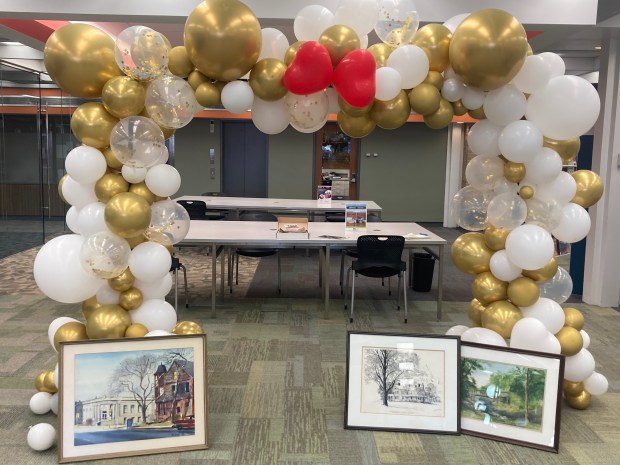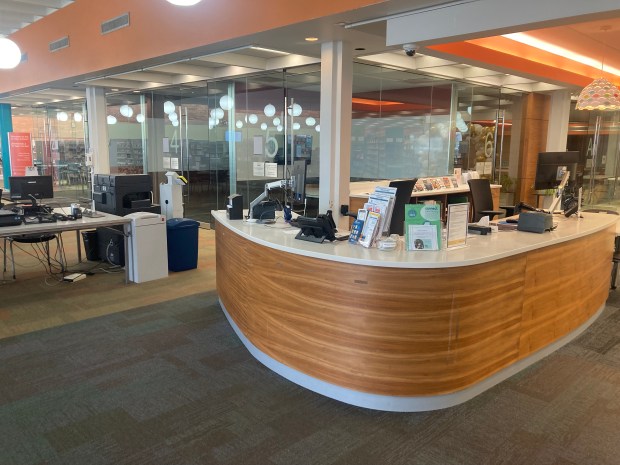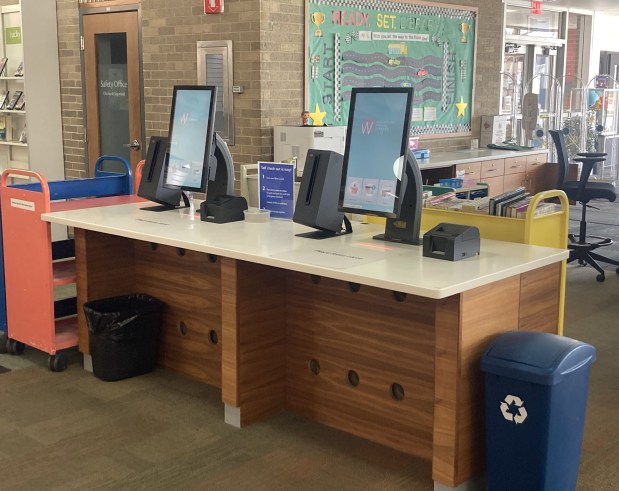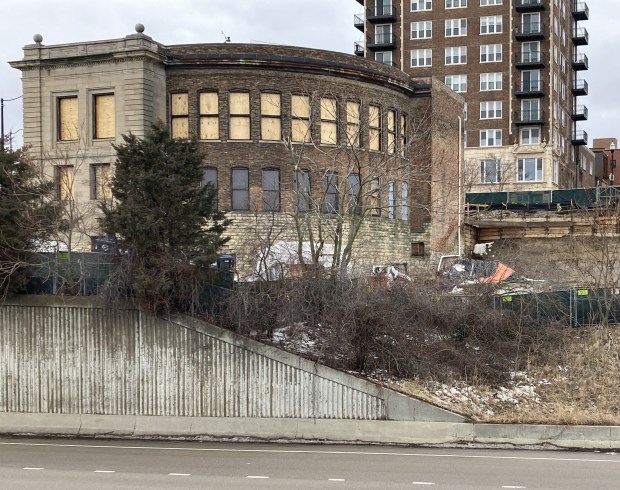Books were expensive when the Waukegan Public Library first opened its doors in the late 19th century so it gave city residents a place where they could borrow, read and then return them so others could do the same.
Now patrons borrow hotspots for a free connection to the internet, music and video games. There are rooms where classes are held for immigrants to learn English. There are plans for booths where people will be able to access free virtual doctor visits.
Renowned author Ray Bradbury developed his thirst for books in the children’s reading room. As a child, Mayor Ann Taylor said it was the place she got books to read. She marvels at what is there now.
“It’s become a place for the community, and provides what the community needs,” she said. “It continues to meet the needs of people with many different needs, and has become a community library.”
The Waukegan Public Library raised $24,000 Saturday at its 125th-anniversary gala held inside the building to begin purchasing equipment for a maker space to house equipment, from sewing machines to 3D printers for public use.
Since Executive Director Tiffany Verzani became involved in library operations elsewhere 30 years ago, she said she has seen significant changes in the transition of libraries from loaning books to giving people access to learning in new ways.
Verzani said she remembers loaning VHS reorders, and then CD players, as technology changed from tapes to discs. Movie and music loans were added to book borrowing. Computer use by patrons is now common. Staff is there to teach people how to use them.
As people learn to design things from tools to toys on computers, they need 3D printers to produce them. Often the tools are too expensive for many to buy. Verzani said patrons’ use of the maker space is the solution.
“We’re developing it in stages,” she said. “We’re going to start buying the equipment,” she added, referring to a sewing machine, a vinyl cutter, a 3D printer and more. “Eventually we’ll have a room where people can walk in and use the equipment.”
Jon Martin, the president of the library’s Board of Trustees, said he is excited about plans to offer a telehealth booth in the library where anyone can access a virtual doctor’s appointment.
“It will look like an old-fashioned phone booth, so they can have privacy,” Martin said. “Anyone will be able to access medical support there. It will be permanently in the library as a resource.”

Though the state of Illinois did not provide for tax-supported public libraries until 1872, according to the Illinois State Library website, the first private library in the area began in 1845 when Waukegan was still known as Little Fort.
A group of people formed the Little Fort Reading Room and Library Association in 1845, according to the Waukegan library’s website. Members paid $1 a year for the privilege of putting books there so members could borrow them.
Housed in the courthouse, the original collection was burned during a fire in 1857. Ty Rohrer, the cultural arts manager for the Waukegan Park District and a historian, said the idea of a public library started with the Sesame Club in 1894.
Forerunner to the current Waukegan Women’s Club, Rohrer said the Sesame Club — composed of nine Waukegan women — opened a free library and began working with the city to get taxpayer funding. In November of 1898, the Waukegan Public Library opened.

As the Library looked for a permanent home, resident Oliver Lincoln willed the lot at the northeast corner of Washing Street and Sheridan Road for a park, Rohrer said his heirs gave the city the right to build a library there.
With the land available, a library board member reached out to industrialist Andrew Carnegie in 1901 for funds to erect a building, according to the library’s website. Carnegie agreed to donate $25,000 as long as the city added $2,500.

As the Carnegie became too small to accommodate the growing needs of the library, the current building was built at the corner of Clayton and County streets with the help of a $1.125 million bond issue, according to the library website. It opened in 1965.
The Carnegie is now under renovation to become the new home of the Waukegan History Museum at the Carnegie. Rohrer said the Park District hopes it will open in the fall. It will house a replica of the children’s reading room where Bradbury spent his boyhood, and will contain the late author’s private collection of papers.



